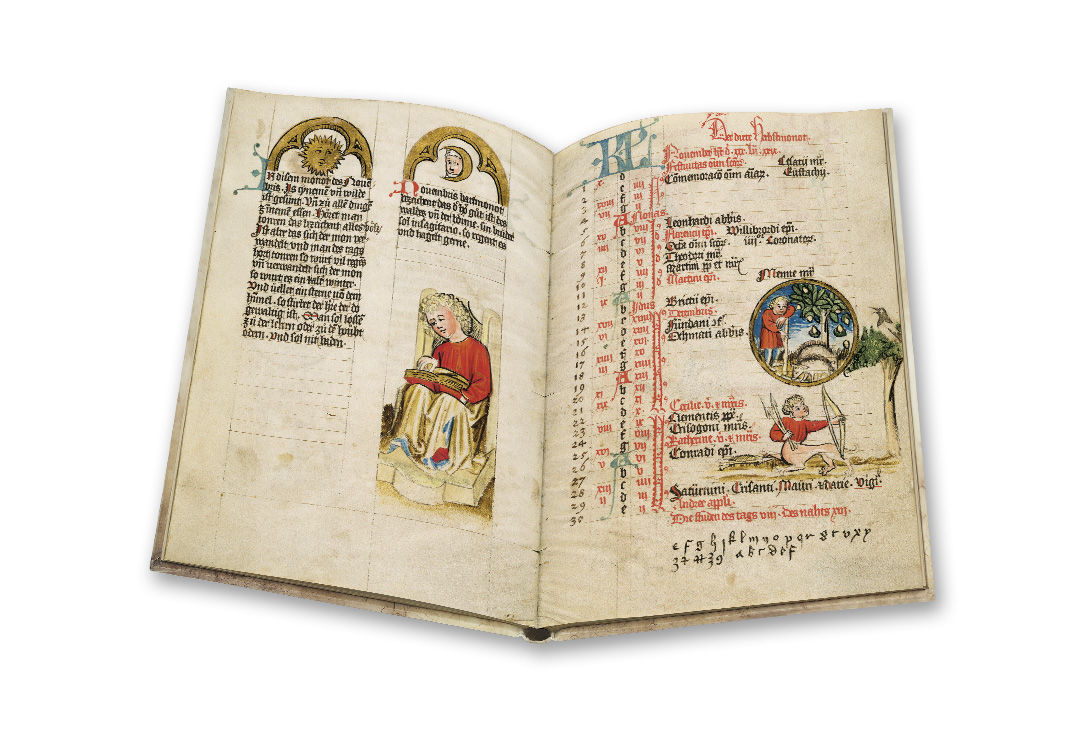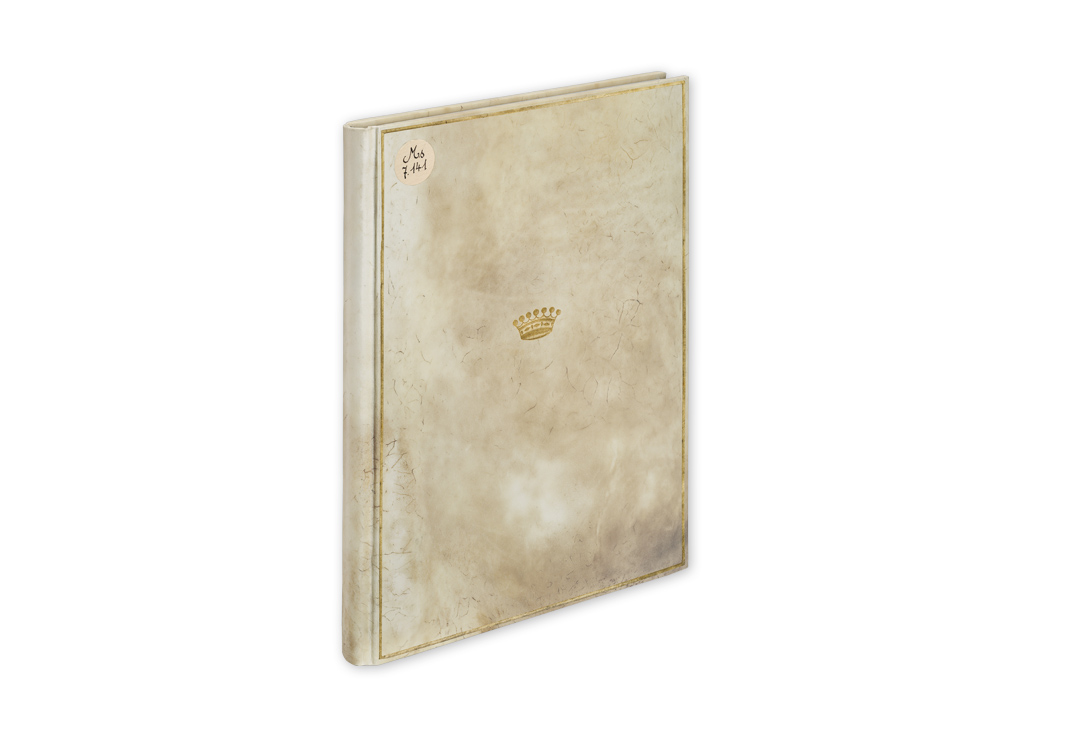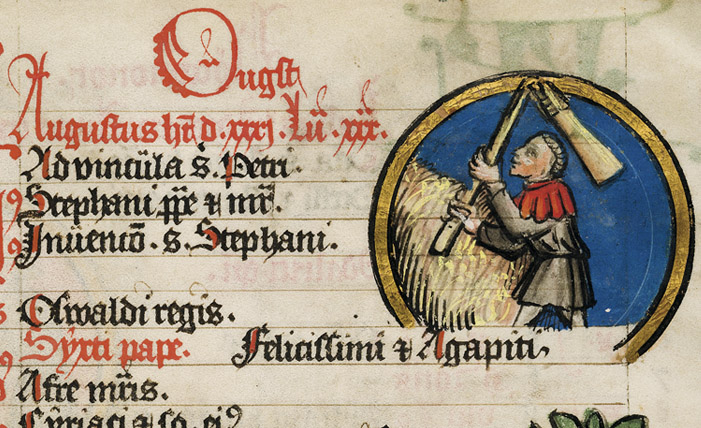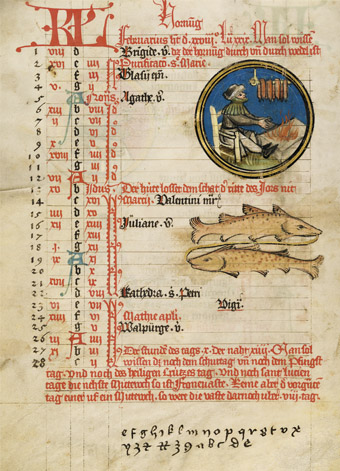
A Medical-Astronomical Calendar
Health tips and nutritional advice from the 15th century
Bring the everyday life of the Middle Ages directly into your living room with the Medical-Astronomical Calendar! Tips on health and nutrition, divinations, weather forecasts and monthly rules: a sumptuously equipped, perpetual calendar from around 1460 gives you a deep insight into the medieval world of imagination month after month. On 24 pages, it combines a wide variety of components and is simultaneously an annual calendar, medical guide, astrological guide and weather forecast. Colourful book decoration and vivid figures full of life illustrate each month. Even today, such a guidebook is still a very special treasure chest in every household.
A Medical-Astronomical Calendar
Medical-Astronomical Calendar: The Manuscript
Questions? The calendar knows the answer
What are the stars like this month? What do the weather phenomena mean? What must be considered with regard to health and nutrition? The calendar has answers to such questions as these, posed by medieval man. In May, for example, goat’s milk should be drunk every morning and fresh herbs are recommended. In October, the events that occur after thunder are predicted for thirteen Month after month, the calendar leaf and the corresponding health rules, weather forecasts, and a short explanation of the meaning of the zodiac signs are juxtaposed. With its explanations in the vernacular, the Medical-Astronomical Calendar offers complex scholarly knowledge for everyday use.
The medieval cosmos
The health and character of people are determined by cosmic forces according to medieval ideas. Following ancient tradition, everything consists of the four elements earth, fire, water and air. Four primary qualities are assigned to these (dry, moist, hot and cold), which in turn are connected with the four bodily juices and the four temperaments (sanguine, phlegmatic, choleric, melancholic). Depending on the season, the position of the moon, the zodiac sign, the month, the day or the hour, there were different influences on the mixture of juices of medieval man, which had to be balanced out – to be informed about the cosmos was therefore essential for treating or preventing diseases.
House book of Alsatian patrician?
Details of the book binding as well as missing wormholes on the back of the last monthly leaf reveal that this calendar was part of a much larger book. The generous use of gold and precious opaque colors make it a representative codex. While some of the calendar’s saints’ festivals point to the diocese of Strasbourg, the style of painting is influenced by the Upper Rhine (Freiburg/Colmar). The pictures of the monthly medallions, signs of the zodiac and the scholarly depictions are associated with the “Master B”, who also worked as a freelance illustrator for the famous workshop of Diebold Lauber in northern Alsace.

Medical-Astronomical Calendar
Under the Magnifying Glass: Calendar month for February
As is typical with medieval calendars, there are also a lot of details to discover on this calendar leaf: first a column for the Golden Number in red Roman numerals j-xix (to calculate the new moons and movable holidays like Easter), then for the Sunday letters A-g (to determine the day of the week in relation to the dates). The red letters are used to identify the Roman calendar order according to calends, nones and ides. To the right in the wide column of text are the feasts of the saints for the month in question, the high feasts in red, and the ordinary feasts in ink. Above and below the calendar of saints there is information about the number of days in the calendar month and the corresponding lunar month, as well as the distribution of day and night hours.
An activity still familiar to us in the cold of the winter months – sitting by the fire and warming our feet – is depicted in the gold-framed medallion for the month of February. Wet leg warmers dry over the fire (or are sausages hanging in the smoke?), and the well wrapped figure sitting on a chair stretches out his hands against the fire, seeking warmth. With loving care, the zodiacal sign of Pisces is depicted as an opposing pair of fishes with a golden band from mouth to mouth.
Facsimile Edition
A Medical-Astronomical Calendar: The Edition
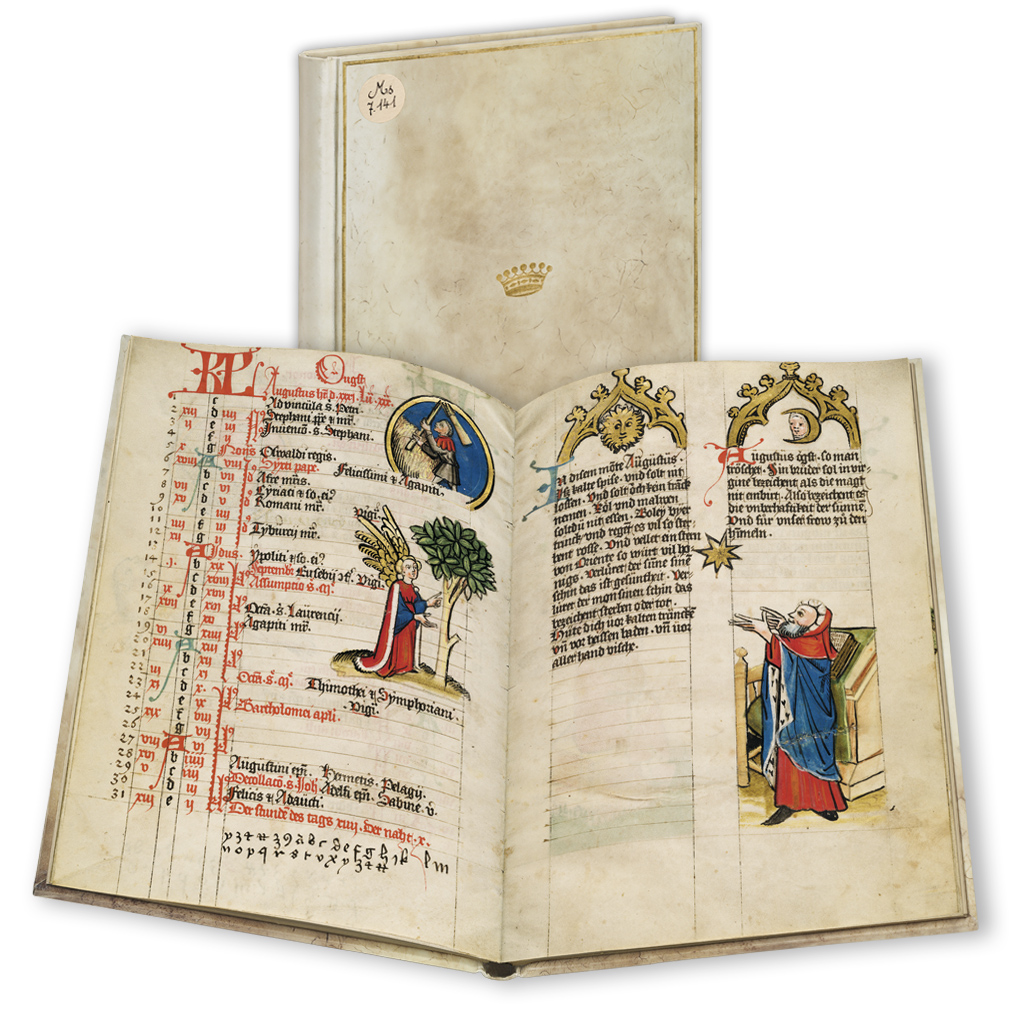
Manuscript and Facsimile at a Glance
The Medical-Astronomical Calendar is unusually preciously decorated with gold and opaque colours, with paintings of high artistic quality. It offers today’s viewer interesting insights into the imaginary world of medieval society.
Manuscript: Strasbourg, Bibliothèque nationale et universitaire, Ms. 7141
Date of Origin: c. 1460
Place of Origin: Upper Rhine (Freiburg, Colmar)
Dimensions: c. 20,6 x 15,5 cm
Extent: 24 pages (12 leaves)
Artist: Master B from the surroundings of the Lauber workshop (?)
Patron: unknown
Illumination: 12 monthly medallions framed in gold, 12 signs of the zodiac and eleven scholarly images with 22 decorative gold arches. Rich pictorial decoration with gold and bright opaque colour painting
Binding: parchment binding with fine gold embossing
Commentary Volume on the Facsimile Edition by Christoph Mackert with a contribution by Lieselotte Saurma-Jeltsch. All texts are transcribed and translated into New High German
Print run: 680 copies
Facsimile Edition
Enjoy Viewing a Few Sample Pages:
A Glance at the Facsimile
This section of the Medical-Astronomical Calendar shows the months January to March, as well as the first page of the calendar with the yearly forecasts. It starts with a page of annual forecasts, which depend on the day of the week on which the first day of the year falls. The following double pages of the months of January, February and March always show the calendar on one side and the health rules on the other, together with forecasts based on meteorological-cosmic phenomena. Golden Gothic keel arches decorate the columns of text, and a scholarly figure adds weight to the contents.
Facsimile Edition
A Challenging Production: fac simile
A facsimile of a testimony
The Medical-Astronomical Calendar was auctioned in 2015 by the National and University Library of Strasbourg for £ 55 000. The original was digitised with the greatest care in the library rooms to faithfully reproduce the bright opaque colours and the precious gold decoration in the facsimile. The parchment binding presents the bookbinder with special challenges. The material, which is difficult to process, requires a special binding technique that only a few bookbinders still master.
Careful transcription
The text inventory of the Medical-Astronomical Calendar is not a homogeneous whole, but consists of different elements, each with its own text and tradition history. Thanks to intensive studies, the author of the commentary has succeeded in identifying the existing texts for the first time. Several additions have been added to the existing text over the centuries. With the careful transcription, the text is already easy to understand and offers a direct insight into the dialectal colouring of the writing language.
The key to the Calendar
The last step is the translation of the Latin and vernacular passages into modern German. In the commentary volume to the Facsimile Edition of the Medical-Astronomical Calendar, the line by line transcription allows for comprehensible reading and the translation makes it easier to understand – thus you hold the key to the Calendar in your hand! In addition, the Commentary Volume offers a vivid introduction to the exciting world of medieval astro-medicine and forecasting by the presentation of the various text templates.
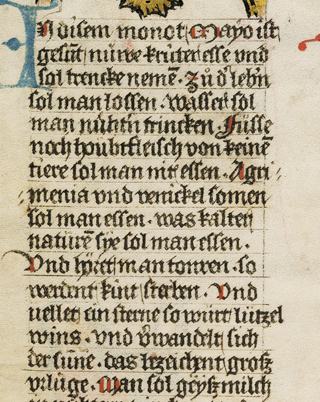
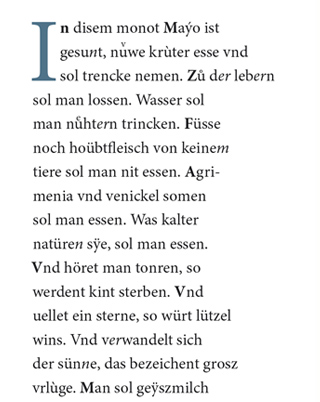
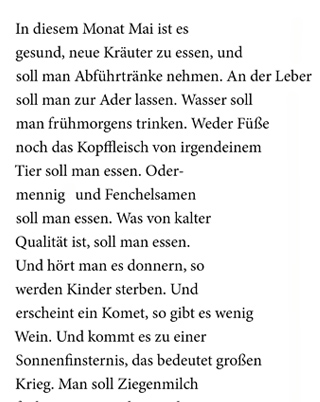
Astro-medizinischer Kalender
Request brochure
We would be glad to provide you with additional information regarding the facsimile edition of the Medical-Astronomical Calendar. Click here to order the brochure.
Contact us
Do you have any questions about the facsimile edition of the Medical-Astronomical Calendar? Please do not hesitate to contact us. We are looking forward to your message.




